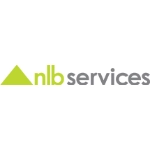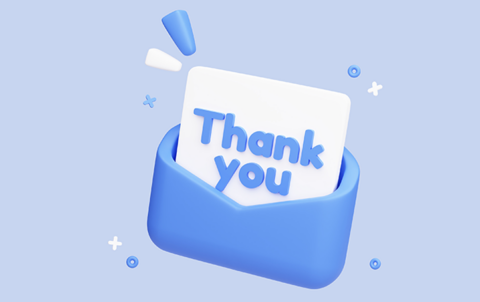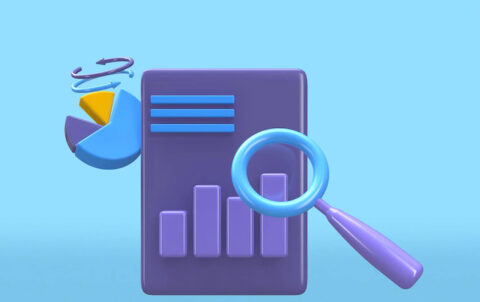© 2025 Next Level Business Services Inc. All Rights Reserved.
How to Design Your Employee Lifecycle Strategy for 2026
By NLB Services
Most companies often spend months perfecting their customer journey maps, tracking every touchpoint, interaction, and moment of delight. But when it comes to its employees? There are chances that no such tracking exists, barely a half-baked onboarding checklist, and an annual review template that is hardly being used.
What companies fail to understand is that the employees are not just passing through their organization; they are on a journey of their own. And if you’re not intentional about designing that journey, you are taking a risk of losing your most valuable assets- your people and their talent.
In this blog, we will explore why employee lifecycle strategy matters in 2026 and how your organization can create one. If you want to attract, develop, and keep great people, you will need more than just good intentions and a great HR strategy.
Why Employee Lifecycle Strategy Matters in 2026
As we head into 2026, it is important to note that the rules of engagement have changed, and creating a strategy for employees is a prominent ask in order to keep attracting the right talent and, more importantly, make them stay with the organization for as long as possible.
Think of the last time someone great from your team quit. Did they just leave because of a bad day? Probably not. They left because of a thousand small moments that added up, such as moments they felt unseen, underutilized, or undervalued.
That’s what happens when you don’t have a cohesive employee lifecycle strategy. You’re risking not just turnover, but also bleeding productivity, morale, and institutional knowledge. Multiple factors in play emphasize that employee lifecycle strategy must be pre-planned and intentional, not mere paperwork:
The talent market is candidate-driven
Every organization needs top talent, which means top performers have plenty of options. If your employee experience appeals transactional or neglectful, candidates are unlikely to stay for long.
Employee expectations have evolved
Candidates want flexibility, growth opportunities, and a sense of purpose. When they join your company, they want to feel like it’s a stepping stone in their career building, not just for collecting paychecks.
Retention is the new recruitment
It’s not a new fact that it’s far more expensive to replace someone than to keep them engaged. A strong employee lifecycle strategy directly impacts your employee retention and saves you money.
Defining the Modern Employee Lifecycle
It’s time to take a deep dive into what exactly the employee lifecycle is. It is the complete journey an employee takes with your organization, starting from the moment they first hear about you to the day they leave (and sometimes beyond).
Let’s understand how this actually works and what stages are involved:
1. Attraction
This is the beginning of the lifecycle of a potential employee, when they discover or get to know about your company.
2. Recruitment
As the name implies, this is the stage where the potential candidate goes through the interview and hiring process. Now, the experience that they get in this stage seeds an idea of what the company might look and function like. An efficient interview and hiring process can reveal a lot about an organization’s human resource efficiency.
3. Onboarding
This stage is all about welcoming and integrating new hires into the organization, doing their induction, getting to know the team, where’s what and how things function, etc.
4. Development
Perhaps the most crucial stage for an employee, the development stage begins when the employee goes through training, upskilling, and deciding their career trajectory. When organizations involve themselves with employees at this stage, it reaffirms the employee’s belief in the organization, and they stick with them long.
5. Retention
This stage defines how long someone stays with the organization. Retention is all about keeping employees engaged, giving them the support and flexibility they need to bring out their best and drive outcomes, keeping them aligned with the organization’s vision while also staying satisfied.
6. Separation
No matter how good care of employees an organization takes, employees leaving them is inevitable; thus comes the separation stage. This stage kicks in when an employee decides to leave the organization. It comprises offboarding, handover of assets and duties, and ensuring a smooth transition without affecting the crucial tasks.
7. Alumni
Once an employee separates, they enter the alumni stage, where the employee and organization do not work directly but maintain a relationship. As an organization, it is a healthy practice to keep its good employees in mind even after they leave. The former employee will always root for an organization that still remembers their contribution even after leaving.
But here’s the interesting part. The modern employee lifecycle isn’t linear. People don’t just move neatly from one stage to the next like they’re on a conveyor belt. They loop back. They pause. They accelerate.
Maybe someone joins your company, stays three years, leaves for a new opportunity, and then boomerangs back because they missed your culture. Maybe a high performer stagnates in the development phase because no one’s checked in on their goals in 18 months. There are different scenarios where the employee lifecycle stage varies, and it is important for organizations to revamp and adapt to keep things moving.
Building Your Employee Lifecycle Strategy
Employee dynamics are changing. What used to work in the 80s may not have been relevant in the 90s, and so on. Since 2026 is right around the corner, here is a roadmap for how to actually design an employee lifecycle strategy that works:
Map Every Touchpoint
First, you need to see what is going on in the organization. Start by auditing what is already happening. Start looking for: What does a new hire experience on day one? What does a manager do during a performance review? What happens when someone resigns?
Jot it all down. Then ask, Is this intentional, or is it just happening by default? Try looking for gaps. Maybe your onboarding is stellar, but your development stage is nonexistent. Maybe you’re great at recruiting, but people feel abandoned just three months in. These kinds of cracks are where employees slip through.
Prioritize Employee Engagement at Every Stage
Employee engagement is not a one-time activity. It is not limited to a pizza party or a Slack shout-out; it’s about the ongoing sense that someone’s work matters, their voice is heard, and they’re growing. Make people feel like they matter at every stage, and they will value your organization.
Build Retention into Your DNA
The ground reality is, you can’t keep everyone forever. People move on, and that is okay. But you can dramatically improve employee retention by focusing on what is actually driving people away.
Opportunities that employees deem better than your organization are external factors beyond your control; apart from this, employees usually leave the organization for the following reasons:
- Lack of growth opportunities
- Feeling disconnected from leadership
- Burnout and poor work-life balance
- Not being recognized for contributions
Have real conversations with employees, this goes beyond annual reviews, more about monthly or quarterly check-ins where you ask, “What’s working? What’s not? What do you need from me?”
Customize for your Workforce
Time for another truth-bomb: your employee lifecycle strategy can’t be one-size-fits-all. Remote teams need different touchpoints than in-office teams. In a nutshell, a 22-year-old fresh grad and a 45-year-old senior manager aren’t motivated by the same thing.
Your HR strategy 2026 should account for these differences.
Conclusion
Designing an employee lifecycle strategy for 2026 isn’t about following a rigid playbook; it’s more about creating a dynamic, people-first approach that evolves with your workforce. Start by mapping the journey, prioritize engagement and retention at every stage, and remember, your employees aren’t just resources. They’re people with goals, ambitions, and lives outside work.
Frequently asked questions
- What is the employee lifecycle in HR?
The employee lifecycle in HR refers to the complete journey an employee takes with an organization, from the moment they’re attracted to the company through recruitment, onboarding, development, retention, to eventually, separation. It also includes the alumni stage, where former employees may become brand ambassadors, clients, or even boomerang hires. Each stage requires intentional strategies to create a positive employee experience.
- How does a lifecycle approach improve retention?
A lifecycle approach improves employee retention by addressing potential pain points at every stage of the employee journey. Instead of reacting to turnover, you’re proactively creating touchpoints that keep employees engaged, supported, and growing.
- Do lifecycle strategies apply to contract workers?
Absolutely. Contract workers might have shorter tenures, but they still go through a lifecycle: attraction, onboarding, engagement, and offboarding. A strong employee lifecycle strategy for contractors ensures they feel integrated into your team, understand expectations, and have a positive experience, even if they’re not permanent employees. Also, today’s contract hire can be tomorrow’s full-time hire, so they must not be overlooked.
- Should the employee lifecycle strategy be different for remote teams?
Yes, what works for in-office teams doesn’t necessarily work for the remote workforce. Remote teams need some adjustments. Since you’re not sharing physical space, you have to be more intentional about communication, connection, and visibility. Onboarding might require more virtual face time. Development might lean on digital learning platforms. Retention efforts should focus on combating isolation and ensuring remote employees feel just as included as in-office staff. The core principles stay the same, but the execution looks different.
- How can I measure the success of an employee lifecycle strategy?
Track both quantitative and qualitative metrics. On the data side, look at turnover rates, time-to-hire, employee engagement scores, promotion rates, and exit interview feedback. Qualitatively, pay attention to employee satisfaction surveys, one-on-one feedback, and overall team morale.
Talent Solutions








